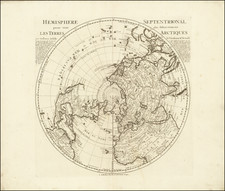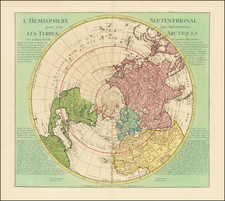Search
One of the largest and best-organized voyages of exploration, the Great Northern Expedition completely remapped the Arctic coast of Siberia and some parts of the northwest coast of America. Vast amounts of hitherto unknown detail were filled in, which was previously represented following myth and speculation.
The idea of a land bridge from Siberia to America was long-held, appearing in maps since the fifteenth century and being the subject of academic speculation as to the origins of the indigenous peoples of America. To seek out the possibility of this land bridge, Peter the Great sent two unsuccessful land surveys to the area, before sending the First Kamatchka Expedition in 1725. This expedition made it slightly further than Cap Chutotsky and St. Lawrence island (now part of Alaska), and was celebrated as proving the absence of a land bridge between Russia and North America. This expedition made Bering, its commander, a national hero.
The logical next step was to try and reach North America. Empresses Anna and Elizabeth were both interested in continuing Peter the Great's legacy of exploration and sponsored a Second Kamatchka Expedition (1733-43). The expedition comprised of three separate groups; two divisions (one headed by Bering himself) crossed the Pacific, while an academic expedition explored Siberia. The academic interest in this expedition was great, and several leading scientists and geographers of the day were involved in its planning, including the cartographer Gerhard Müller.
This expeditions, later known as the Great Northern Expedition, filled in vast amounts of previously unknown coastal details. The important achievements of the second expedition included the European discovery of Alaska, the Aleutian Islands, the Commander Islands, Bering Island, as well as a detailed mapping of the northern and north-eastern coast of Russia and the Kuril Islands. The expedition also ended the myth of a massive landmass in the North Pacific. It would be this expedition that sparked the intriguing period of Russian settlement in North America.


